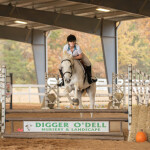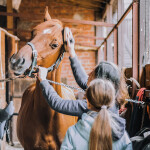Ensure your horse's long-term success with preventative care and tailored performance plans. Discover expert tips on maximizing your horse’s athletic career through strategic management, training, and musculoskeletal health.
One of the greatest joys of horse ownership is building a strong, lasting partnership with a dedicated companion. For horse owners and trainers, the goal is to maintain that partnership for years, allowing horses to compete at their peak without interruption. However, without proper care, some horses may face injuries and early retirement, cutting their careers short. Extending the longevity of a performance horse isn’t about luck—it takes thoughtful care, strategic training, and effective management.
Make it or Break it: Conformation
There’s no magic formula to guarantee your horse a long, productive athletic career. Some factors are within your control, while others are not. One factor largely out of your control is conformation.
Conformation refers to how a horse’s bones are structured and where joint stress occurs. It is primarily determined by genetics and quality breeding.
Poor conformation can place disproportionate and excessive stress on a horse’s knees, hooves, hocks, stifles, shoulders, and back. When biomechanical forces combine with imperfect skeletal anatomy, these stressors accumulate. An inadequate training program can further exacerbate the issue, causing excessive inflammation in the horse’s bones and soft tissues from repeated impact.
Demand a Plan: Care and Management
Even with good conformation, a well-thought-out management plan is essential for maximizing your horse’s performance career. It starts with general and preventative care, including health checks, hoof care, nutrition, training, and rehabilitation. Good husbandry practices are the cornerstone of maintaining a performance horse’s longevity.
Work closely with your veterinarian to create a diet plan that maintains body weight and supports lean muscle development. Stay current on vaccinations, deworming, and dental care by scheduling veterinarian visits for the fiscal year. Discuss bodywork options with your veterinarian to support your horse’s musculoskeletal system, such as chiropractic care, PEMF therapy, acupuncture, or shockwave/laser treatments. Some veterinary practices offer these services for an additional fee.
Hoof care cannot be overstated. Schedule regular farrier visits every four to six weeks to ensure your horse’s hooves remain balanced, as proper hoof care is critical for biomechanical health and soundness.
A balanced, nutritious diet is vital for a performance horse, promoting healthy bone, cartilage, and joint growth. Avoid overfeeding, particularly in young horses, as this can lead to conditions like osteochondritis dissecans (OCD), a joint issue causing pain and lameness. In mature horses, excessive calories that aren’t burned off during exercise can result in weight gain, which places undue stress on joints.
Training and rehabilitation regimens are equally important. Poor training techniques can cause breakdowns, cutting a performance horse’s career short. Understand your horse’s limitations and gradually build their fitness to meet the demands of their discipline. Collaborate with your trainer and veterinarian to create a custom training schedule that includes a recovery day.
Tracking your horse’s workouts is as simple as tracking your own. Consider using an equine heart rate monitor paired with a Bluetooth device, such as a smartphone. Equine workout apps can detail your horse’s exercise, including gait times and speeds. Additionally, monitor your horse’s body condition score (BCS) and weight monthly. Be mindful to include at least one weekly recovery day in their training plan, as overworking horses can lead to anxiety and an increased risk of soft tissue injuries.
By following these guidelines, you can help ensure your performance horse remains healthy, happy, and capable of excelling in their discipline.
Final Thoughts
When your horses are well cared for through preventative management and training, their performance careers can last longer. As owners, it’s critical to maximize a horse’s career through strategic planning for musculoskeletal system maintenance. Consult with your veterinarian, farrier, and trainer to develop a performance schedule tailored to your horse’s needs. Set realistic expectations for your horse’s athletic career and prioritize preventative care to ensure their long-term success.
To read more horse health articles click here. To view American Association of Equine Practitioners (AAEP) horse owner horse health articles click here. To visit Equine Disease Communication Center for horse health alerts click here.








